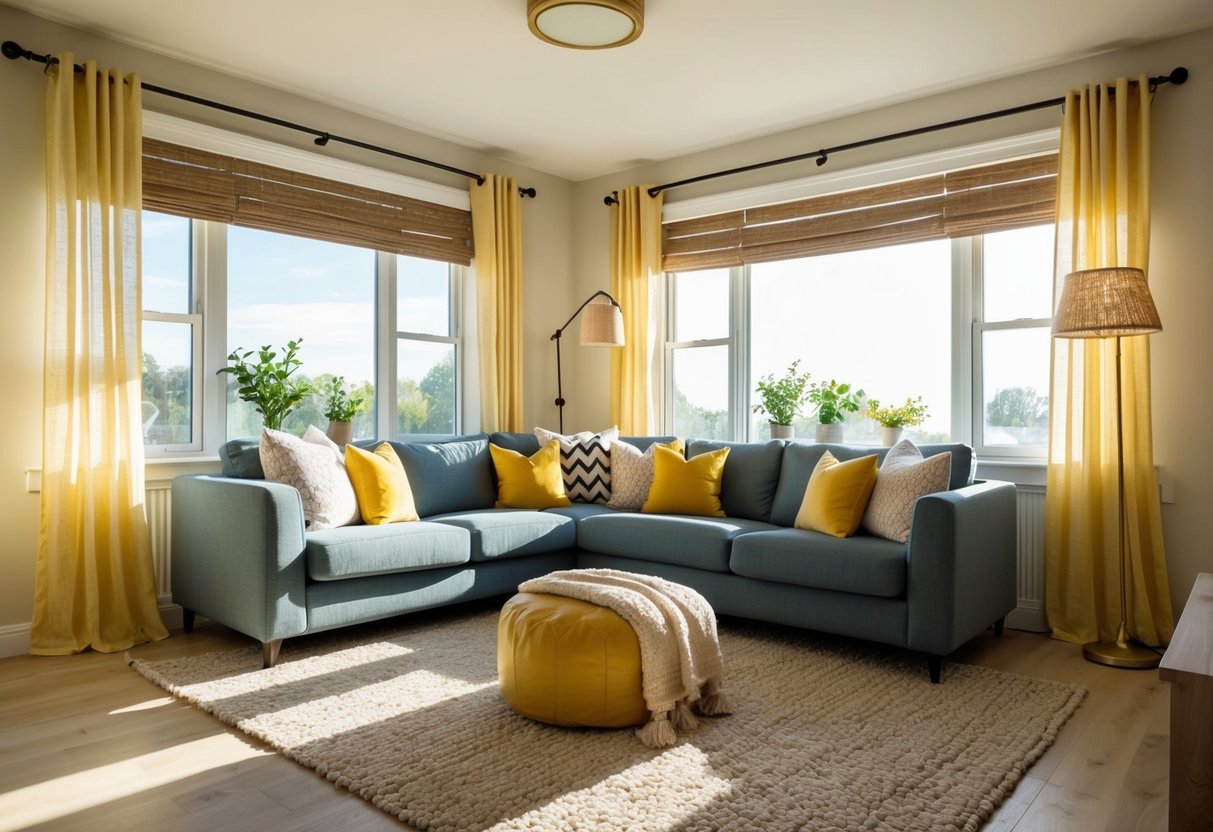The Ultimate Guide to DIY Window Treatments: Stylish and Functional Solutions
When Aesthetics Meet Function
When designing window treatments, it’s crucial to maintain harmony between style and practicality. Roman shades provide a clean, tailored appearance while allowing light control. Adding layers, like sheer curtains over blackout shades, can create depth and enable versatile lighting options.
Layering isn’t just visually appealing. It also enhances insulation. Using materials like linen or velvet can add richness to the décor. Tiebacks become an essential element here, offering a simple way to adjust light levels and add decorative flair.
Custom Embellishments and Details
Personalizing window treatments can elevate their visual interest. Embellishments like tassels, trims, or contrasting fabrics are effective in adding character. Roman shades can be customized with decorative borders that complement the room’s style.
Choosing ornate hardware supports the overall look. Opt for rods with intricate finials or brackets that echo the room’s theme. Adding custom tiebacks made of unique materials like braided cords or fabric flowers can further enhance the aesthetic appeal, offering a distinctive touch to any window dressing.
Guides to Specific Treatment Types

Window treatments enhance both aesthetics and functionality. DIY Roman shades and no-sew curtains offer stylish, practical solutions for revamping windows without extensive sewing skills.
DIY Roman Shades
DIY Roman shades provide a chic and tailored appearance to any window. To start, measure the window frame precisely. This ensures that the shade fits properly. They usually require fabric, a wooden dowel, and a cord system. Fabric choice impacts the room’s look, whether opting for a bold print or a subtle texture.
Attaching fabric to the dowel gives the shade its smooth appearance when raised or lowered. These shades often involve a cord lock system for easy adjustment. This project suits many skill levels, enhanced by video tutorials online. By selecting the right materials, anyone can craft a custom Roman shade that complements the room’s design.
Creating No-Sew Curtains
No-sew curtains are an excellent option for those looking to simplify the process without sacrificing style. Begin by choosing fabric that matches the room’s decor. A wide range of patterns and textures can set the tone, from light and airy to thick and insulating. Hemming tape or fabric glue are key components in constructing these curtains.
Using iron-on adhesive tape, the fabric’s edges neatly bind without sewing. This saves time and adds a clean finish. Create custom lengths to tailor the curtains to specific windows. No-sew cafe curtains can transform a kitchen, adding privacy and charm. These solutions offer flexibility and are accessible to beginners seeking budget-friendly window treatments.
Installation and Maintenance
Proper installation of DIY window treatments can greatly enhance their efficiency and aesthetic appeal. Regular maintenance helps preserve their functionality and appearance, ensuring long-lasting benefits for any space.
Installing Your Treatments
Accurate measurements are essential for a seamless installation process. Begin by measuring the dimensions of the window frame to determine the appropriate size for the desired treatment. It is vital to select the right mounting hardware, as this will ensure stability and durability. Common choices include brackets, anchors, and screws, depending on the type of wall or window frame material.
DIY window treatments are a cost-effective home improvement option. Many come with detailed installation guides, making it easier for individuals to follow step-by-step directions. Being prepared with the necessary tools like a level, drill, and screwdriver can help streamline the process.
Remember to check for obstructions like window handles or locks that might interfere with the treatments. Adjustments may be necessary to accommodate such features, ensuring a neat fit and smooth operation.



